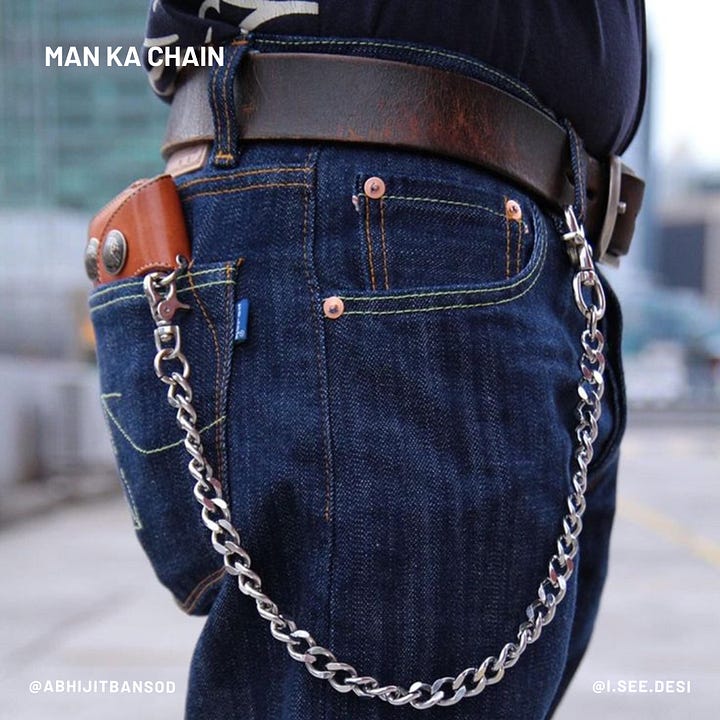Childhood train travel held a vital ritual: pushing all the bags under the lower berth, threading a long metal chain through their loops and handles, and locking it securely to a hook on the berth. This chain was—and still is—an integral part of our product culture. In India, a steel glass chained to a public drinking water tap is a familiar sight, a humble yet necessary safeguard. Ironically, sometimes the chain itself is more valuable than the belongings it protects.


The gold chain, meanwhile, stands as the ultimate symbol of wealth and a well-to-do family, possibly the most commonly bought gold jewelry in India. It has even spurred an industry of gold chain snatchers, and both live on, coexisting in a curious balance. Some local politicians flaunt layers of gold chains unabashedly, using them as moving signboards of power and opulence.




Bollywood also tapped into the symbolism of the chain. The 1973 film Zanjeer, directed by Prakash Mehra and starring Amitabh Bachchan, uses its title (meaning “chain”) to represent the shackles of oppression, injustice, and revenge that hold the protagonist, Vijay, in a metaphorical bondage. Bappi Lahiri, the legendary Bollywood composer, adopted gold chains as a hallmark of his flamboyant style, draping himself in thick layers of gold chains and pendants to reflect his love for glamour and luxury, making them a symbol of his unique persona.
The chain is a strong symbol with many meanings. It stands for unity, strength, and connection, as each link supports the others, showing how strength grows when things are united. Chains can also represent cycles and continuity. However, they also symbolize restriction, as they have often been used to hold or confine. This mix of meanings gives the chain a unique depth that people understand across cultures, showing both the bonds that hold us together and the weight of responsibility.
In life, the most important thing is मन का चैन.
I see Desi,
I see Design.






